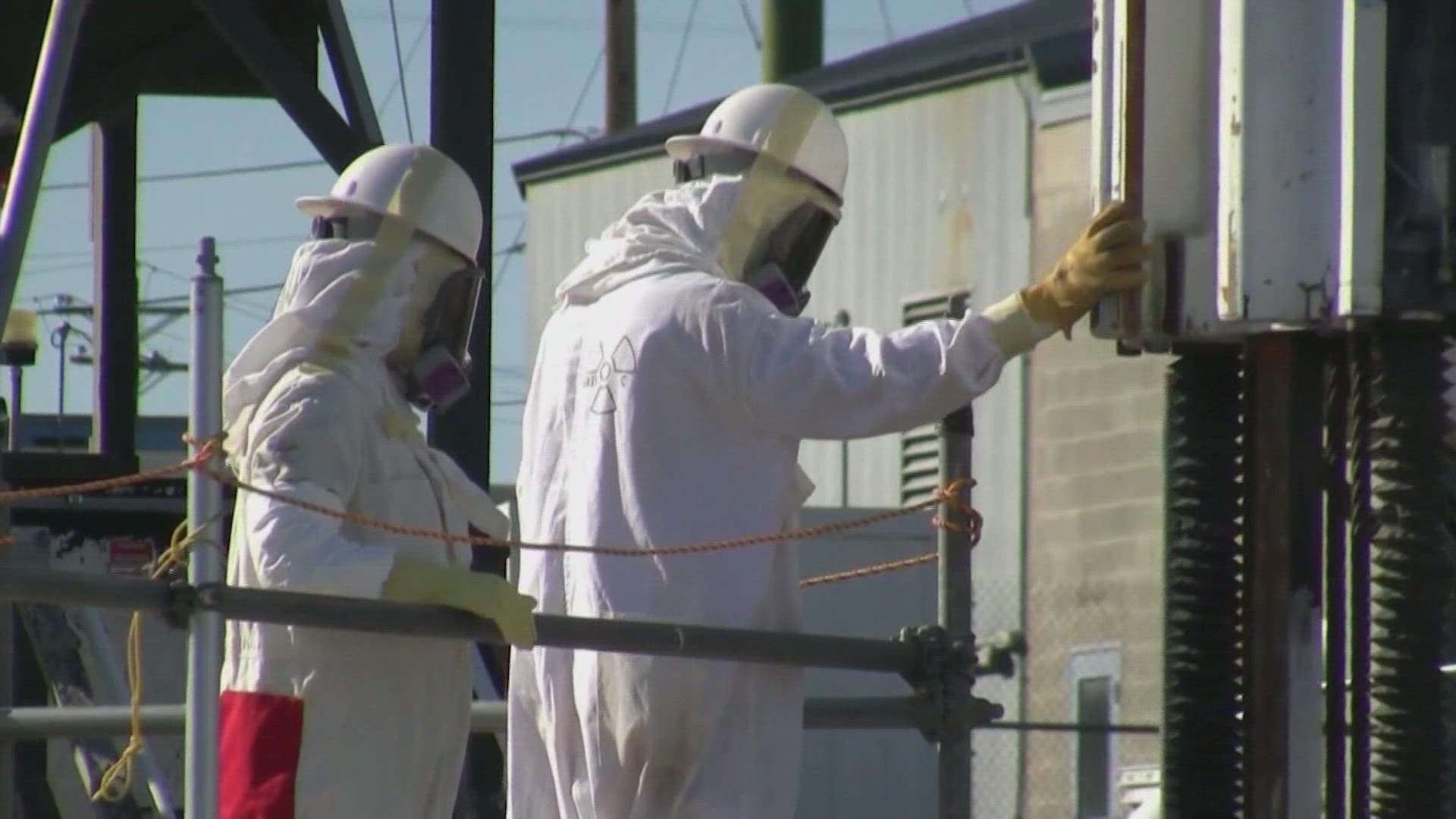RICHLAND, Wash. — The United States Supreme Court ruled Tuesday that a 2018 Washington state law aimed at helping sick Hanford workers obtain benefits and medical care was unconstitutional under the “Supremacy Clause.”
In a unanimous decision, the court struck down the state’s 2018 law saying it “facially discriminates against the Federal Government and its contractors.” The Trump administration filed a lawsuit challenging the law in Dec. 2018 arguing it violated “intergovernmental immunity.”
However, Washington Attorney General Bob Ferguson said in a statement that an “updated and enhanced” law passed by the state Legislature during the 2022 session remains in place, “ensuring that workers at radioactive waste sites like Hanford still receive compensation benefits for health issues they have faced because of their work.”
Ferguson said the protections apply to all individuals, including state employees, who work on the Hanford Site.
“Because the legislature already fixed the issues the federal government raised, there is little practical impact in Washington as a result of this ruling,” Ferguson said in a statement. “Hanford workers, and all others working with dangerous radioactive waste, remain protected. The federal government has not challenged this new law. If they do, we will defend these protections all the way back up to the Supreme Court again if we have to. As long as I’m Attorney General, I will fight for Hanford workers.”
The Biden administration has not challenged the new law, nor has it indicated it plans to, Ferguson said.
In a statement, Gov. Jay Inslee said he disagreed with the court’s decision but emphasized that “it’s important to note that this does not remove protections for Hanford workers.”
“[The 2022] law is appropriate and necessary to hold the federal government accountable in its obligation to care for workers exposed to dangerous radiation and their families,” Inslee said. “There are numerous examples of Hanford workers struggling to get assistance for illnesses that have clearly been caused by exposures at the nation’s most contaminated environmental cleanup site.”
In 2018, the state Legislature passed House Bill 1723 which gave Hanford workers with certain illnesses the presumption that they got sick at work from exposure to toxins such as heavy metals, chemical vapors and radioactive isotopes. This is a similar presumption given to Washington state firefighters who routinely come into contact with hazards such as smoke and dangerous chemicals associated with building and car fires
Before the 2018 law, the KING 5 Investigators showed for three decades Hanford workers were systematically cheated out of benefits. Hanford’s self-insured program used tactics such as doctor shopping and submitting incomplete medical information to unfairly deny claims. The process left workers sick, broke and unable to work.
Unlike most other employers in the state, the Department of Energy (DOE), which owns Hanford, runs a self-insured workers' compensation program, which means the feds pay the claims.
Many Hanford workers suffered serious illnesses their doctors said were poisonous vapor-induced, including occupational asthma, COPD, cancer, organ damage and occupational dementia. Yet in each of their cases, their workers' compensation claims were repeatedly denied.
“The workers need this law. They deserve this law. They have worked and paid with their life and injuries to clean up one of the most toxic sites [in the world] and I don’t understand [the challenge to it],” said Bertola Bugarin in September 2021. Her husband, 70-year-old Abe Garza, is critically ill after several exposures to toxic vapors at Hanford. One of Garza's most serious adverse health conditions is toxic encephalopathy, also known as occupational dementia. “[The Biden administration is] saying workers at Hanford are a commodity and expendable.”
Soon after Washington lawmakers passed the Hanford bill, the Department of Justice, under the Trump administration, appealed the law. Federal attorneys argued the law is unconstitutional because states do not have the authority to regulate federal operations or property. However, in 1936 Congress gave states broad authority to apply their workers’ compensation laws to federal projects.
The DOJ lost that case in 2019 and again lost an appeal to the Ninth Circuit in August 2020 before taking it to the Supreme Court.
A bipartisan group of 60 Washington state lawmakers sent a letter of protest to President Biden in October 2021, urging him to drop a Trump-era legal challenge to a state law aimed at helping sick Hanford workers obtain benefits and medical care.
Hanford, located near Richland in southcentral Washington state, was created by the Manhattan Project during World War II and made the plutonium for much of the nation's nuclear arsenal. Hanford plutonium was used in the second atomic bomb nicknamed "Fat Man," which dropped on Nagasaki on Aug. 9, 1945 at the end of World War II.
RELATED: What is Hanford?
Afterward, production continued to support the country’s stockpiling of nuclear weapons throughout the Cold War.
By the time plutonium production ended in 1987, Hanford had become the most contaminated place in the entire Western Hemisphere. Approximately one million gallons of nuclear waste has already leaked out of the single-shell tanks and is slowly making its way toward the Columbia River. Some radiation has been found in the Pacific Ocean near the mouth of the Columbia River.
Because of the deterioration of the single shells, much of the tank farm work currently focuses on transferring the waste from those tanks into the sturdier double shells.
As double-shell tanks begin to break down, a grave concern is the lack of space for the waste. No new tanks have been constructed since the 1970s, despite years of expert recommendations that new tanks need to be built to hold the waste until the Vit Plant is operational.
Hanford remains the biggest environment cleanup job in U.S. history, funded with about $2 billion a year. There are budget documents published by the government showing the cleanup lasting into the 2080s and costing taxpayers $100 billion or more.
Hanford's main entrance, located on the outskirts of Richland, is 200 miles from Seattle.
The site is about 586 square miles.
More info on Hanford:

